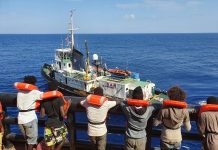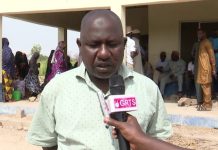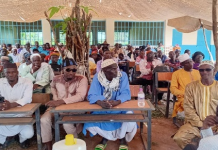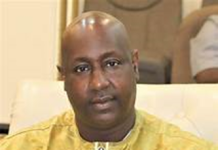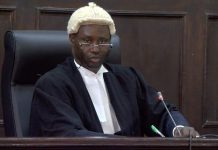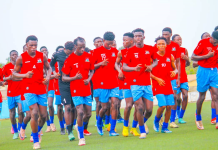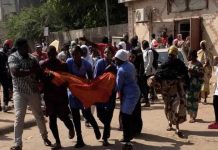By Kebba Jeffang
The spokesperson of the National Water and Electricity Company (NAWEC) has told journalists that the customers could feel improvements as some generators are now operational while more projects are being constructed for better service delivery.
PRO Pierre Sylva, went around with media houses to visit power plants in Kotu and Brikama where journalists were shown the situation at hand.
“The trek is aimed at informing the public about some improvements in terms of electricity in the Greater Banjul Area. NAWEC is doing everything possible that the required electricity is provided to customers,” he said.
He informed that generator number six commonly called G6 is now operational which is why the customers are experiencing stable supply recently. However, he said G7 and G8 are also under maintenance at the moment both of which are at Kotu power plant which housed the biggest generators of NAWEC.
Sylva said G3 which is stationed at Brikama power plant is also functioning after it underwent maintenance.
Referring to the ongoing expansion project that is currently under construction at Kotu, Sylva said: “This project is being earmarked to be completed at the end of this year. So very soon we will get additional Megawatts to the existing watts we already have and I think it will improve a long way in trying to cover up the whole of greater Banjul area”.
According to him, 5 out of 6 generators are operational at Brikama at the moment as G4 is under maintenance.
Meanwhile, NAWEC managing director Baba Fatajo commenting on the predicament of NAWEC said the task is very difficult because it doesn’t only involve human resources but also capital. He said they have plans for expansion both short and long term to control the situation.
“We expect that in the next few weeks before Ramadan we will have another engine back on at Kotu power station as the works are on and we have also started another one at Brikama. So we expect that within the next 6 to 8 months in the next few weeks we should have another capacity of 11 megawatts and we hope that will significantly improve,” said Fatajo.
He said they are encouraged for the fact that the government has recognized that without solving the electricity problems their vision will not be achieved because it is the vehicle for development. He said the Kotu expansion project of 11 megawatts is also at an advanced level which will be done by the end of the year. He said Brikama also has another project which is already secured, adding “contract has been signed and we have sent the request of mobilization for contractor which will be done in next few weeks and we are expecting another 20 megawatts”. He said they are expecting a significant boost in their generation capacity in next 6 to 18 months in range of 30 megawatts. He said most of the expansion as from now will be in Brikama as Kotu power plant is already overcrowded.
He explained that they have during the impasse over used the generators out of necessity.
The Managing Director said they are welcoming the private electricity companies as partners on a win-win basis to improve the country’s power problem.
“The venture is capital intensive and the government doesn’t have resources to do it alone as the resources are scarce and all the sectors are vying for the same resources. So therefore there is a limit to what the government can do in terms of intervention,” he said.
He added: “This is where private company partnership is important and as at now we have been talking to a lot of interested parties that want to participate in the sector. But it is too premature for me to elaborate on those because discussions are going on. And as much as we are desperate we will have to get the right deals because at the end of the day it has to be a win-win situation.”
On whether NAWEC should consider wind power generation as an alternative considering the high cost of generators and their maintenances, the director said they are already working on that but as a supplementary initiative.
“There is this rhetoric that as if we have enough sunlight so that is the solution which is not the ultimate case. The problem is that they can only be supplementary so there is a limit that you can take from them. It all depends on the sunlight and it is not something that is constant as it changes. As a result it brings in a lot of fluctuations and instability in the system. So if you don’t have a base and you put in solar or wind and you have those fluctuations in the end you will be the ones coming back to NAWEC to blame,” he said.
Fatajo said that the energy mix has to be the right thing and they are into that as they already have a 10 megawatts solar project into the system. He maintained that they can only take supplementary supplies from it unlike the generation system.
Tijan Manneh, commercial director said they have been struggling a lot on debts owed by some public enterprises and other government institutions particularly the Area Councils. He said they are making efforts to meet them to talk about the means of settling the debts in an agreeable point for them to pay. He said this has been a big problem on NAWEC. He said they are getting into agreement but failure of that there will be power disconnection.
However, he said some of the public institutions owing NAWEC are facing the same challenge and any disconnection in their offices will also disturb the public which sometimes hinder them from their disconnection.
